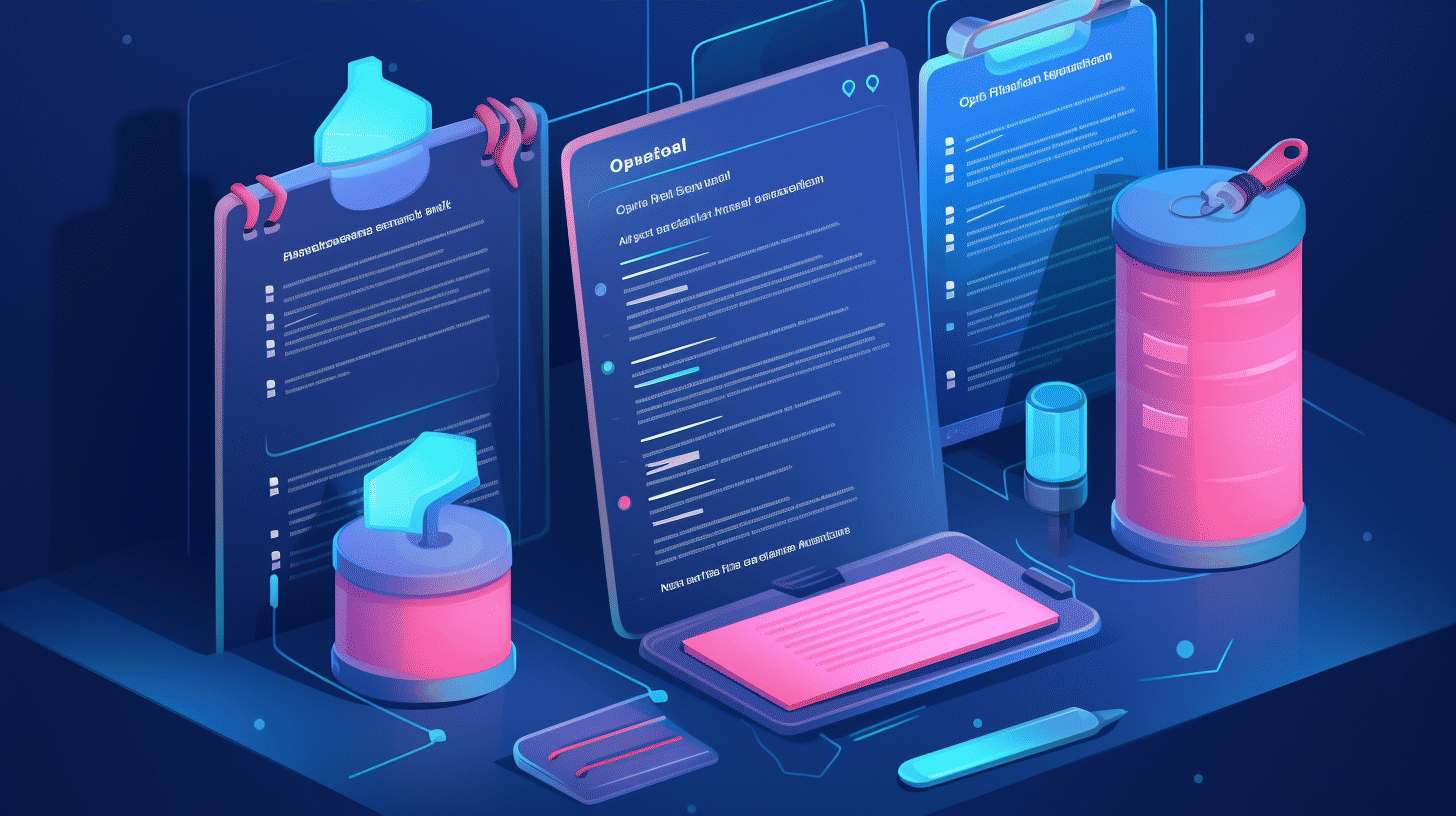在當今數位時代,擁有強大的網路影響力對於企業和個人來說都至關重要。一個設計良好、功能齊全的網站對於吸引和留住用戶來說可以發揮重要作用。說到網站建立平台,WordPress 是最受歡迎的選擇之一。
WordPress 提供了用戶友好的介面、大量的主題和外掛程式以及提供持續更新和改進的活躍社群。然而,僅僅建立一個 WordPress 網站是不夠的。為了確保最佳性能和長使用壽命,定期維護至關重要。
在本文中,我們將探討 WordPress 維護的重要性以及它如何有助於您網站的整體成功。我們將深入研究維護 WordPress 網站的核心任務,並討論效能優化、安全措施、備份和災難復原、網站監控以及 WordPress 支援和故障排除。
無論您是企業主、部落客還是網站開發人員,了解 WordPress 維護服務的重要性都將使您能夠在維護和優化網站時做出明智的決策。那麼,讓我們一起深入探索 WordPress 維護的世界吧! 😊
WordPress 維護的重要性
在當今數位時代,維護 WordPress 網站不僅僅是創建和發佈內容。定期維護對於網站的整體健康、安全和效能至關重要。這就像保養汽車一樣——如果您忽視定期保養,那麼出現問題只是時間問題。
確保網站安全👮♂️
優先考慮 WordPress 維護的主要原因之一是確保您的網站的安全。隨著網路威脅和攻擊的不斷增加,保護您的網站及其保存的敏感資料比以往任何時候都更加重要。定期的維護任務可以幫助保護您的網站免受潛在的駭客攻擊和安全漏洞的侵害。
透過保持 WordPress 軟體、主題和外掛程式為最新版本,您可以確保擁有最新的安全修補程式和修復。過時的版本通常存在漏洞,駭客可以利用這些漏洞來未經授權存取您的網站。此外,定期的安全性檢查(例如掃描惡意軟體和實施強大的使用者驗證措施)可以協助確保您的網站安全無虞。
優化性能⚡️
網站速度對於使用者滿意度和整體成功起著至關重要的作用。網站載入緩慢不僅會讓訪客感到沮喪,還會對搜尋引擎排名產生負面影響。透過執行定期維護任務,您可以優化 WordPress 網站的效能並提高其速度和效率。
一些可以顯著提高網站效能的維護任務包括:
- 快取:實施快取機制可以幫助減少伺服器負載並加快您的網站速度。
- 資料庫最佳化:透過刪除不必要的資料、優化表格和減少膨脹來清理 WordPress 資料庫可以提高網站速度。
- 影像壓縮:在不影響品質的情況下優化和壓縮影像可以減少頁面載入時間。
- 失效連結管理:定期掃描和修復您網站上的斷開的連結可改善用戶體驗並幫助搜尋引擎機器人更有效地瀏覽您的網站。
增強使用者體驗🎨
提供無縫且愉快的使用者體驗對於吸引和留住 WordPress 網站訪客至關重要。定期維護有助於確保您的網站正常運作並消除任何可能妨礙使用者體驗的問題。
以下是定期進行 WordPress 維護可以增強使用者體驗的幾種方法:
- 響應式設計:定期測試您網站的響應能力並進行必要的調整,確保它在不同設備和螢幕尺寸上的外觀和功能均良好。
- 內容更新:保持您的網站內容新鮮且相關資訊更新,有助於用戶保持參與度並了解最新資訊。
- 外掛和主題更新:更新外掛和主題不僅可以提高與最新 WordPress 版本的兼容性,還可以確保它們繼續無縫運行,從而增強用戶體驗。
請記住,忽略定期的 WordPress 維護可能會導致安全漏洞、效能不佳以及使用者體驗不佳。透過優先執行維護任務,您可以保持網站順利運行,並創建訪客喜愛的正面的線上形象。
核心 WordPress 維護任務
維護您的 WordPress 網站對於確保其安全性、功能性和最佳效能至關重要。透過定期執行核心維護任務,您可以確保您的網站保持最新、免受安全威脅並進行最佳化以獲得最佳效能。在本節中,我們將探討每個網站所有者應優先考慮的五個基本核心 WordPress 維護任務。那麼,就讓我們開始吧! 💪🔧
更新 WordPress 核心
WordPress 維護的基本任務之一是將 WordPress 核心更新到最新版本。更新 WordPress 核心可確保您的網站受益於最新的安全性修補程式、錯誤修復和新功能。這就是為什麼更新 WordPress 核心很重要:
- 增強安全性: 每個新的 WordPress 版本都會解決已知的安全漏洞並提供修補程式以保護您的網站免受惡意攻擊。
- 改進的功能: 更新通常包括新功能、效能改進和錯誤修復,以增強整體使用者體驗。
- 與主題和外掛的兼容性: 更新 WordPress 核心可確保您的網站與最新版本的主題和外掛程式相容,從而降低衝突或功能損壞的風險。
請記住,在更新 WordPress 核心之前務必備份您的網站,以便在更新過程中出現任何問題時有一個還原點。安全第一! 🛡️
更新主題和插件
除了更新 WordPress 核心之外,定期更新主題和外掛也同樣重要。原因如下:
- 錯誤修復和相容性: 開發人員發布更新以修復錯誤並確保與最新版本的 WordPress 和其他外掛程式相容。透過保持主題和外掛程式為最新版本,您可以避免潛在的衝突並確保無縫功能。
- 安全增強功能: 更新通常包括保護您的網站免受漏洞攻擊的安全修補程式。如果忽視更新,就會為潛在的安全漏洞打開大門。
- 新功能和改進: 更新可以為您的主題和外掛帶來令人興奮的新功能、改進的效能和可用性增強。
請記住,維護不善的主題和外掛程式可能會成為您網站安全的薄弱環節,因此請確保定期更新它們。 🔄
備份網站
定期備份您的網站是 WordPress 維護中的一項基本任務。可以將其視為保護您的辛勤工作和數據的保險單。以下是您應該備份網站的原因:
- 防止資料遺失: 事故可能發生,伺服器崩潰,或發生惡意攻擊。透過備份您的網站,您將擁有文件和資料庫的副本,如果出現問題,您可以恢復它。
- 安心: 知道您有最近的備份可以讓您安心,讓您可以嘗試新的設計、插件或功能,而不必擔心永久丟失資料。
- 輕鬆恢復: 有了備份,您可以快速將網站恢復到以前的狀態,最大限度地減少停機時間並減少任何問題的影響。
請記住定期安排備份並將其安全地儲存在與伺服器分開的位置。安全總比後悔好! 💾
掃描惡意軟體和漏洞
定期掃描您的網站以查找惡意軟體和漏洞對於確保網站的安全性和保護您的訪客至關重要。您應該定期執行惡意軟體掃描的原因如下:
- 早期檢測: 掃描您的網站可以幫助您識別任何潛在的安全威脅或惡意軟體感染,以免它們對您的資料造成損害或外洩。
- 防止列入黑名單: 如果您的網站感染了惡意軟體,搜尋引擎可能會將其列入黑名單,導致您的網站被標記為危險或使用者無法存取。
- 維護您的聲譽: 安全的網站可以與訪客建立信任。透過確保您的網站不受惡意軟體的侵害,您可以保護您的品牌聲譽並保留受眾的信任。
有幾種可靠的安全插件可以幫助您掃描網站中的惡意軟體和漏洞。定期掃描是維護 WordPress 網站安全的重要部分。 ✅
優化資料庫
優化您的 WordPress 資料庫是維持最佳網站效能的必要任務。以下是您應該考慮優化資料庫的原因:
- 提高網站速度: 隨著時間的推移,您的資料庫可能會充滿不必要的資料。透過最佳化,您可以刪除冗餘訊息,從而加快頁面載入時間並提供更流暢的使用者體驗。
- 減少儲存: 透過刪除垃圾資料和優化表結構,優化資料庫可以減少其大小。這可以幫助您節省儲存空間並提高網站的整體效率。
- 提高效率: 透過優化資料庫,您可以提高查詢的效能並減少伺服器的壓力,從而提高網站效率。
有各種外掛程式可以幫助您進行資料庫優化,這使其成為一項簡單的任務,可以對您網站的效能產生重大影響。 🚀
透過定期執行這些核心的 WordPress 維護任務,您可以確保您的網站保持安全、功能齊全且優化以實現成功。請記住,預防是網站維護的關鍵,因此不要忽略這些基本任務!讓您的 WordPress 網站順利、無憂地運作。
效能最佳化
效能優化是網站開發的一個重要方面,其重點是提高網站的速度和效率。經過適當優化的網站不僅可以增強用戶體驗,還可以提高搜尋引擎排名。在本節中,我們將探討效能最佳化的三種關鍵技術:快取、影像壓縮和最小化。
快取🔒
實施快取機制有助於減少伺服器負載並提高網站速度。當使用者造訪網站時,他們的瀏覽器會將 HTML、CSS、JavaScript 和圖像等檔案儲存在快取中。透過此緩存,瀏覽器可以快速檢索並顯示這些文件,而無需在每次後續訪問時向伺服器發出另一個請求。透過利用快取,網站可以顯著減少載入時間並最大限度地減少伺服器的壓力。
快取的主要優點包括:
- 為回訪者提供更快的載入時間
- 減少伺服器負載和頻寬消耗
- 提升網站響應能力和使用者體驗
影像壓縮
圖像在網頁設計中起著至關重要的作用,但它們也可能是導致頁面載入時間緩慢的最大因素之一。在不影響品質的情況下壓縮圖像可以透過減小檔案大小來提高網站效能。檔案大小的減少意味著圖像可以更快地從伺服器傳輸到使用者的瀏覽器。
影像壓縮的好處包括:
- 減少頻寬使用量
- 更快的頁面載入時間
- 提高網站整體效能
- 增強數據套餐有限的行動裝置使用者體驗
為了實現最佳影像壓縮,Web開發人員可以使用各種工具和技術,例如:
- 使用影像壓縮軟體或線上服務
- 透過選擇合適的檔案格式(例如 JPEG、PNG)來優化網路圖像
- 調整影像尺寸和品質設定以在檔案大小和視覺吸引力之間找到適當的平衡
最小化
透過刪除不必要的字元和空格來縮小 CSS、JavaScript 和 HTML 檔案有助於縮短頁面載入時間。當開發人員編寫程式碼時,他們經常會添加註解、縮排和空格以提高可讀性。但是,這些額外的字元和空格對於瀏覽器解釋和執行程式碼來說並不是必需的。
縮小的主要好處包括:
- 減小檔案大小,加快下載速度
- 改進瀏覽器解析和渲染速度
- 減少網路延遲和頻寬消耗
為了縮小程式碼,開發人員可以使用專門的工具或外掛程式。這些工具會自動從程式碼中刪除不必要的字元、空格和換行符,從而產生更精簡、更有效率的檔案。
總之,效能優化是網站開發中不容忽視的關鍵面向。實施快取機制、壓縮影像和縮小檔案可以顯著提高網站速度、使用者體驗和搜尋引擎排名。透過投資優化技術,網站開發人員可以確保他們的網站快速有效地加載,吸引訪客的注意力並為他們提供無縫的瀏覽體驗。
安全措施
在當今的數位環境中,企業必須優先考慮其線上平台的安全性並保護敏感的客戶資訊。實施強有力的安全措施不僅可以保護您的業務和客戶,還可以提高您的聲譽並建立信任。以下是每個企業都應考慮的一些基本安全措施:
🔒 SSL 憑證安裝
確保您的線上狀態的第一步是在您的網站上安裝 SSL 憑證。 SSL(安全通訊端層)憑證可對您的網站和訪客之間的通訊進行加密,確保傳輸的資料保持機密且不被窺探。它創建一個安全連接,可以透過瀏覽器網址列中的“https”前綴和掛鎖圖示來識別。
安裝 SSL 憑證有幾個好處,包括:
- 資料加密:SSL 加密可確保您的網站與使用者之間交換的任何資訊保持安全且不會被攔截。
- 信任和信譽:擁有 SSL 憑證的網站能夠贏得訪客的信任和信心,訪客更有可能參與、購買和分享個人資訊。
- 改進的搜尋引擎優化:搜尋引擎優先考慮具有 SSL 憑證的網站,這可以提高您的網站在搜尋結果中的排名。
🧪 定期安全審核
實施安全措施並不是一次性的任務;它需要持續的警覺和評估。定期的安全審計對於識別基礎設施中的漏洞、潛在威脅和弱點至關重要。這些審計涉及手動和自動測試,以確保最高級別的安全性。
定期安全審核的主要好處包括:
- 及早發現漏洞:審計有助於在漏洞和威脅被利用之前檢測到它們,從而讓您能夠及時解決它們並防止潛在的違規行為。
- 符合標準:稽核有助於確保您的安全措施符合業界最佳實務和監管要求,讓您和您的客戶都安心無憂。
- 持續改進:透過定期進行安全審核,您可以不斷改善您的安全態勢,適應不斷變化的威脅並領先網路犯罪分子。
🔐 強密碼
簡單或容易猜到的密碼是網路犯罪分子的夢想。保護您的線上帳戶和系統從使用強密碼開始。以下是設定強密碼的一些技巧:
- 長度和複雜性:密碼長度至少為八個字符,並包含大小寫字母、數字和符號的組合。
- 避免使用常用密碼:避免使用容易被猜到的密碼,例如「123456」或「password」。駭客經常使用自動化工具來破解弱密碼。
- 每個帳號均獨一無二:每個線上帳戶都使用獨特的密碼,以防止某個帳戶被盜用而產生骨牌效應。
- 考慮使用密碼管理器:考慮使用密碼管理器工具為您的所有帳戶產生並安全地儲存複雜的密碼。
📱雙重認證
雙重認證 (2FA) 透過要求使用者提供第二種驗證方式(通常透過行動裝置或電子郵件)為您的線上帳戶增加了一層額外的安全性保護。即使有人獲得了您的密碼,這一額外步驟也能提供額外的保護級別,防止未經授權的存取。
使用雙重認證的好處包括:
- 增強安全性:2FA 降低了未經授權存取的風險,因為它需要您知道的東西(密碼)和您擁有的東西(行動裝置或電子郵件)才能進入。
- 防止密碼被盜:即使駭客設法取得您的密碼,他們仍然需要雙重身分驗證才能存取您的帳戶。
- 安心:實施 2FA 讓您的客戶確信您非常重視他們的安全,從而增強他們對您品牌的信任和信心。
在保護您的線上平台安全方面,積極主動而不是被動應對至關重要。透過實施這些安全措施,您可以加強您的業務以抵禦潛在威脅並保護客戶的寶貴資訊。請記住,安全是一個持續的過程,因此請不斷評估和更新您的安全措施,以便領先網路犯罪分子一步。
備份和災難復原
📂 異地備份
有效備份和災難復原策略的關鍵方面是實施異地備份。將資料儲存在與主系統不同的位置可以提供額外的保護層,以防範自然災害、實體硬體故障或網路攻擊等事件。以下是實施異地備份時需要考慮的一些關鍵點:
- 🌐 雲端儲存: 利用雲端儲存服務可以讓您安全地將備份儲存在異地。提供者如 亞馬遜 S3 和 Google 雲端儲存 為資料備份和復原提供可靠且可擴展的解決方案。
- 🗂️ 資料加密: 確保您的異地備份已加密,以保護您的敏感資訊免遭未經授權的存取。許多雲端儲存提供者都提供可設定的加密選項來滿足您的安全要求。
- ⏲️ 定期更新: 設定定期備份計劃,以確保您的資料始終在異地備份。無論是每日、每週或每月備份,擁有可靠的備份計畫有助於在災難發生時最大限度地減少資料遺失。
🔄 規劃備份
除了異地備份之外,定期安排資料備份對於有效的備份和災難復原也至關重要。透過遵循一致的備份計劃,您可以確保關鍵資料受到保護並可在需要時輕鬆復原。實施計劃備份策略時請考慮以下事項:
- 📅 自動備份軟體: 使用允許您安排自動備份的備份軟體。這降低了人為錯誤的風險並確保了備份的持續、及時執行。
- ⏰ 備份頻率: 根據組織的需求和資料變化率來決定需要備份資料的頻率。有些資料可能比其他資料需要更頻繁的備份。例如,包含不斷更新的客戶資訊的資料庫可能需要每天備份,而靜態文件可能只需要每週或每月備份。
- 💾 儲存容量: 分配足夠的儲存空間來容納您的備份。在確定計畫備份所需的儲存容量時,請考慮資料的大小和預期的成長速度。
🔍 測試恢復過程
備份和災難復原的關鍵但經常被忽視的方面是定期測試復原過程。測試可確保您的備份有效,並能在災難發生時成功復原。以下是測試如此重要的原因以及如何有效地實施測試:
- ✅ 確認: 定期測試復原過程以驗證備份是否完整以及資料是否能夠成功復原。在災難發生之前識別任何問題或錯誤至關重要,以確保復原過程順利進行。
- 📝 文件: 記錄恢復備份所需的步驟。該文件可作為緊張情況下的參考指南,幫助您和您的團隊快速有效地恢復資料。
- 🔄 定期測試: 定期進行全面復原測試以確保備份的完整性。這些測試模擬了現實世界的災難場景,讓您可以識別災難復原計畫中的任何弱點或漏洞。
請記住,有效的備份和災難復原策略包括結合異地備份、排程備份和復原過程的定期測試。透過實施這些做法,您可以保護您的資料並在發生意外事件時最大限度地減少停機時間。
網站監控
👋 歡迎來到網站監控的世界!在當今數位時代,擁有一個網站對於企業和個人來說都至關重要。但是,當您的網站離線、速度變慢或容易受到安全威脅時,會發生什麼情況?這時網站監控就可以發揮作用了。在本文中,我們將深入探討網站監控的重要性,並探討三個關鍵面向:正常運作時間、效能和安全監控。所以讓我們繫好安全帶,開始行動吧!
正常運作時間監控
想像一下:您推出了一個全新的網站,一切運作順利,並開始吸引各地的訪客。但是,如果您的網站在您不知情的情況下突然關閉,會發生什麼?您可能會失去寶貴的客戶,損害您的線上聲譽,甚至面臨財務損失。這時正常運轉時間監控就可以發揮作用了。
正常運作時間監控包括定期檢查您的網站以確保其可訪問且正常運作。此過程涉及向您的網站發送定期請求(通常每隔幾分鐘),以驗證它是否正常運作。如果偵測到任何問題,您將收到警報,以便您迅速採取行動並最大限度地減少停機時間。
正常運作時間監控的好處:
- 避免收入損失: 當您的網站發生故障時,您會立即收到通知,從而可以立即採取行動,避免潛在的財務損失。
- 維護信譽: 定期監控可確保您的網站始終可供訪客訪問,從而提高您的可信度和專業性。
- 增強使用者體驗: 始終運行的網站可為您的用戶提供無縫體驗,讓他們保持參與和滿意度。
效能監控
您是否曾經造訪過一個需要很長時間載入的網站?很令人沮喪,對吧?那麼,這就是效能監控介入的地方。如果您的網站速度緩慢、反應遲鈍,您可能會失去訪客和潛在客戶。這就是效能監控發揮作用的地方。
效能監控涉及追蹤與您網站的速度和響應能力相關的各種指標。這包括分析頁面載入時間、伺服器回應時間和整體網站效能等因素。透過持續監控這些指標,您可以識別任何瓶頸,優化網站的效能,並為使用者提供無縫的瀏覽體驗。
效能監控的好處:
- 優化使用者體驗: 快速且反應迅速的網站可以吸引訪客並鼓勵他們進一步探索,從而提高轉換率。
- 提高搜尋引擎排名: 谷歌等搜尋引擎將網站速度視為排名因素。網站速度緩慢可能會對您在搜尋結果中的可見度產生負面影響。
- 識別並修復瓶頸: 效能監控可以幫助您發現網站中導致速度變慢的任何區域,從而讓您及時解決這些問題並提高整體效能。
安全監控
在當今的數位環境中,網路安全是企業和個人最關心的問題。一次安全漏洞就可能導致嚴重的聲譽損害、資料遺失和財務影響。這就是安全監控發揮作用的地方,它可以保護您的網站和敏感資料。
安全監控包括持續掃描和測試您網站的漏洞和潛在威脅。這包括監控惡意軟體、DDoS 攻擊、未經授權的存取嘗試和其他安全風險。透過主動識別和解決這些威脅,您可以保護您的網站和使用者免受潛在傷害。
安全監控的好處:
- 保護敏感資料: 安全監控會密切注意您的網站,防止未經授權的存取並保護敏感的使用者資料。
- 保持信任和可信度: 透過優先考慮網站安全,您可以與使用者建立信任,讓他們確信他們的資訊在您這裡是安全的。
- 減輕潛在損害: 及早發現安全威脅可以讓您迅速採取行動,最大限度地減少潛在損害並避免昂貴的恢復過程。
透過正常運作時間、效能和安全監控,您可以放心,您的網站始終處於正常運作狀態、效能最佳,並且免受潛在安全風險的侵害。請繼續關注我們的下一篇文章,我們將深入探討每個監控方面,並提供可行的提示,以確保您的網站順利運作。 🔍🚀
WordPress 支援與故障排除
您的網站是否在 WordPress 上運作?很棒的選擇! WordPress 是一個功能強大且用戶友好的內容管理系統,您無需任何程式設計知識即可創建令人驚嘆的網站。然而,與其他軟體一樣,它在使用過程中可能會遇到一些問題。但別擔心!在本節中,我們將討論您在使用 WordPress 時可能遇到的一些常見問題以及如何有效地解決這些問題。
問題修復
錯誤可能令人沮喪,但它們是任何軟體開發過程的一部分。 WordPress 也不例外。幸運的是,WordPress 社群一直在努力識別和修復錯誤,確保流暢的使用者體驗。您可以採取以下步驟來解決常見的 WordPress 錯誤:
- 更新 WordPress:保持你的 WordPress 安裝為最新狀態至關重要。開發人員定期發布更新,不僅引入新功能,還修復先前版本中存在的任何錯誤。只需前往您的 WordPress 儀表板並點擊「更新」標籤即可檢查是否有任何可用的更新。
- 禁用外掛和主題:有時,外掛程式或主題之間的衝突可能會導致錯誤。要識別有問題的外掛程式或主題,您可以逐一停用它們,然後查看問題是否仍然存在。從最近安裝或更新的開始。
- 清除快取:快取資料有時會引起衝突並導致意外行為。清除瀏覽器快取和 WordPress 快取可以幫助解決這些問題。您可以使用 WP Rocket 或 W3 Total Cache 等外掛程式輕鬆清除 WordPress 快取。
主題和外掛衝突
主題和外掛是 WordPress 的支柱,使您能夠自訂您的網站並添加各種功能。但是,不同主題和外掛之間可能會發生衝突,從而導致相容性問題和意外行為。您可以按照以下步驟解決主題和外掛衝突:
- 禁用外掛程式並更改主題:與錯誤修復類似,停用外掛程式和更改主題可以幫助識別衝突。停用所有外掛程式並切換到預設的 WordPress 主題(例如 Twenty Twenty-One),看看問題是否仍然存在。如果問題消失,您可以啟用外掛程式並逐一切換到您喜歡的主題來識別衝突的主題。
- 檢查外掛和主題相容性:在安裝新的外掛程式或主題之前,請務必檢查其與您目前的 WordPress 版本的兼容性。大多數開發人員在其產品頁面或外掛程式/主題描述中提供此資訊。使用過時或不相容的外掛程式/主題可能會導致衝突。
- 聯絡外掛程式/主題開發者:如果您確定了導致衝突的特定外掛程式或主題,請聯絡開發人員的支援團隊尋求協助。他們可能有解決方案或推薦可以與您目前設定無縫協作的替代外掛程式或主題。
損壞的連結和頁面
斷開的連結和頁面會影響用戶體驗和 SEO 排名。幸運的是,WordPress 提供了多種工具和技術來解決這些問題。您可以透過以下方法對損壞的連結和頁面進行故障排除:
- 使用連結檢查器插件:安裝連結檢查器外掛程式(例如 Broken Link Checker)可以幫助您識別和修復網站上的已斷開的連結。這些插件會定期掃描您的網站並通知您任何已斷開的鏈接,以便您更新或刪除它們。
- 從備份還原:如果您意外刪除或修改了某個頁面,您可以從備份中還原它。使用 UpdraftPlus 或 Jetpack 等外掛程式定期備份您的 WordPress 網站始終是一個好習慣。恢復備份將把您的網站還原到以前的版本並恢復任何遺失的頁面或內容。
請記住,WordPress 支援和故障排除是一個持續的過程。透過定期更新您的軟體、認真管理衝突和修復斷開的鏈接,您可以確保您自己和您的網站訪問者獲得順暢和最佳的體驗。祝您故障排除愉快! 🔧🐛
結論
在探討了 WordPress 維護的重要性之後,很明顯,定期維護對於維護網站的效能、安全性和整體健康至關重要。忽視維護任務可能會導致安全漏洞、載入時間緩慢以及糟糕的使用者體驗。
Managed-WP™ 可以簡化您的 WordPress 維護流程。作為優質託管 WordPress 雲端託管平台,Managed-WP™ 提供一系列服務,以確保您的網站以最佳效能運作。
使用Managed-WP™,您可以受益於:
- 簡化基礎設施管理
- 專家 24/7/365 問題解決支持
- 自由地專注於您的數位體驗
透過與 Managed-WP™ 合作,您可以放心,因為您的 WordPress 網站已交到可靠的人手中。我們的專家團隊將負責核心更新、主題和外掛程式更新、備份、安全掃描、效能優化等。
不要讓您的 WordPress 網站成為安全漏洞或效能低的受害者。充分利用 Managed-WP™ 並釋放您網站的全部潛力。訪問 託管-WP.com 了解更多並立即開始優化您的 WordPress 體驗!
常見問題解答
- 為了獲得最佳效能,需要哪些必備的 WordPress 維護服務?
為最佳效能而必需的 WordPress 維護服務包括定期更新 WordPress 核心、主題和外掛程式、安全監控、定期備份、效能優化、資料庫優化和網站正常運行時間監控。
- 為什麼定期的 WordPress 維護很重要?
定期進行 WordPress 維護對於確保您網站的安全性、穩定性和最佳效能非常重要。它有助於保護您的網站免受漏洞攻擊,改善用戶體驗,並確保您的網站保持最新的標準和技術。
- 我應該多久執行一次 WordPress 更新和備份?
新版本發布後應立即執行 WordPress 更新。根據您網站內容更新或變更的頻率,建議每天或每週備份。
- 我是否需要聘請專業人員進行 WordPress 維護?
雖然您可以自行執行基本的 WordPress 維護任務,但為了獲得最佳效果,強烈建議聘請專業人員提供 WordPress 維護服務。他們擁有處理複雜問題的專業知識,確保最佳實踐,並節省您的時間和精力。
- 不維護我的 WordPress 網站會有什麼後果?
不維護您的 WordPress 網站可能會導致安全漏洞、軟體過時、效能不佳、載入時間緩慢、網站崩潰和資料遺失。它還會影響您的搜尋引擎排名和用戶體驗。



















